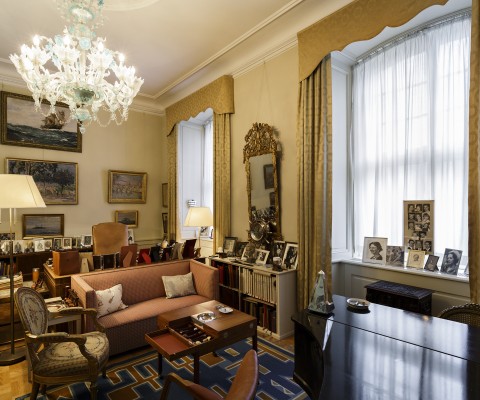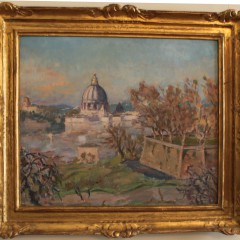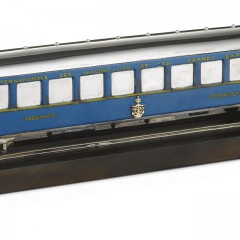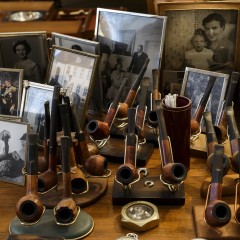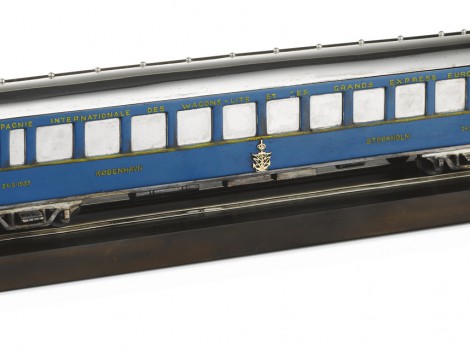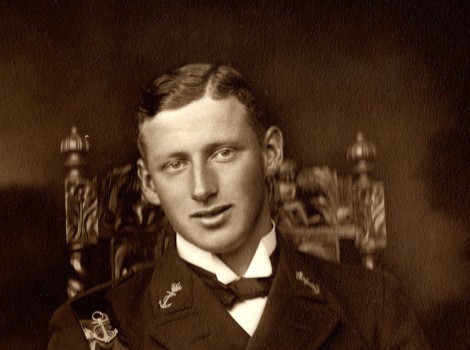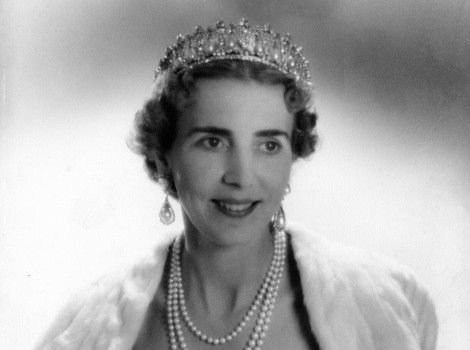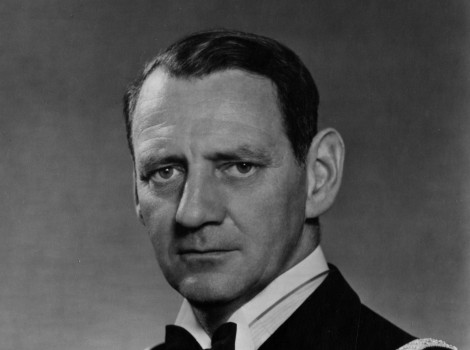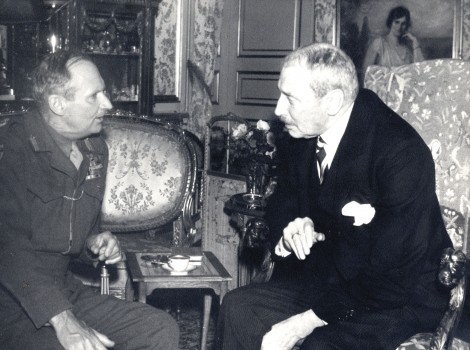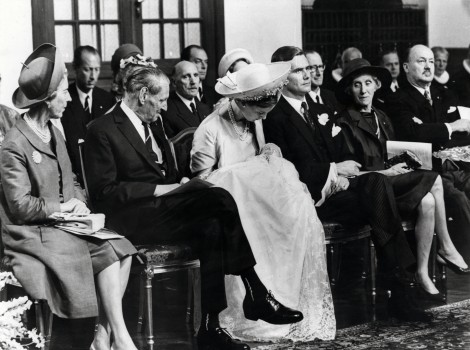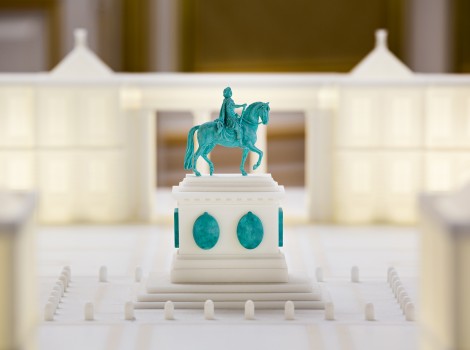Frederik IX’s study
Frederik IX was the father of HM Queen Margrethe II and reigned from 1947 until his death in 1972. As he is the latest in the line of monarchs whose studies are presented in the museum, its position may seem illogical. This is due, however, to the fact that we have attempted to recreate the studies in the spaces which correspond to their original positions in Christian IX’s Palace and Frederik VIII’s Palace respectively (Frederik IX and Queen Ingrid lived in the last named).
Frederik IX’s study bears witness to his background as an officer in the navy. The piano is furthermore evidence of the King’s passion for classical music. The pipes, which there are a surprising number of in the room, were collected by Frederik IX in his later years, when his health no longer permitted him to smoke cigarettes.
The furnishings were periodically changed from the time Crown Prince Frederik and Ingrid moved into Frederik VIII’s Palace in 1935 until the King’s death in 1972. The furnishings are markedly more modern than those one sees in the museum’s other rooms. The study was put on display in 1999, on the 100th anniversary of Frederik IX’s birth, and it is this room which last entered the Collection.
 Dansk
Dansk
 English
English
 Deutsch
Deutsch

